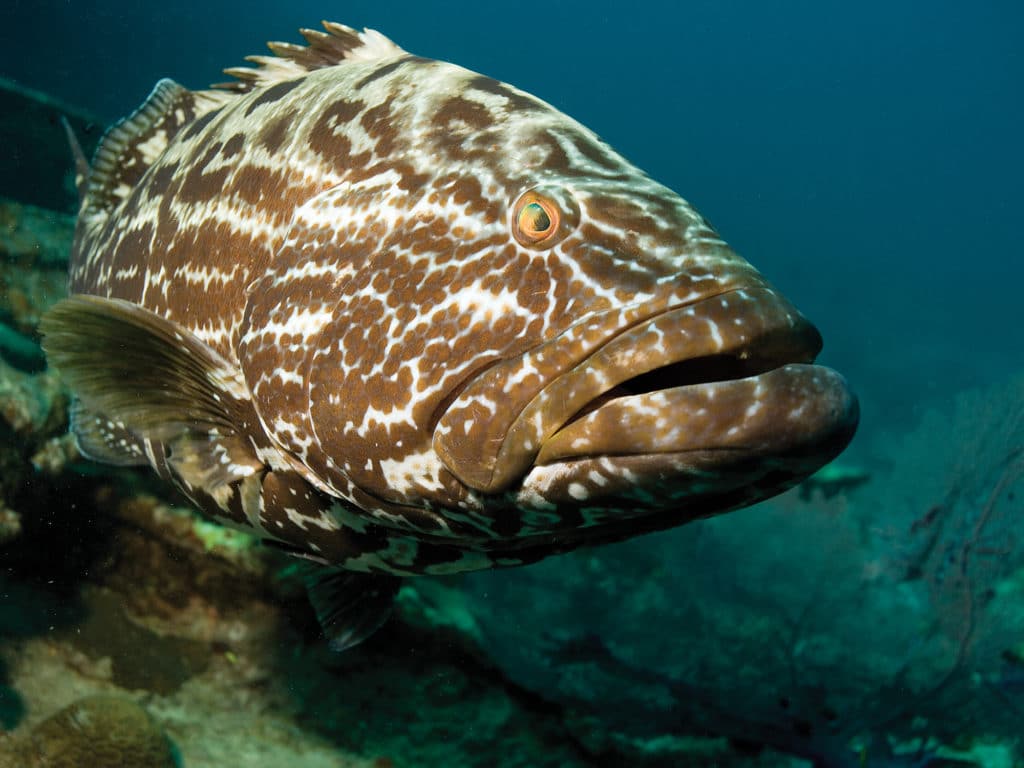
In many areas, the ocean floor is much like a desert, with little in the way of structure and habitat. Wrecks and pronounced bottom topography act as beacons, attracting fish from vast distances and providing prime structure to concentrate various species. Additionally, migratory pelagic predators such as amberjack, mackerels, cobia, dolphinfish and tunas commonly make an appearance over or near wrecks and good bottom topography for food, safety and orientation. If you can find and position yourself effectively over these locations, you are almost guaranteed to bend a rod when bottom fishing.
Conditions such as depth, current and wind all play a part in testing an angler’s patience and skills fishing these locations. While GPS and sonar have taken a lot of the guesswork out of initially locating these areas, there are key tactics captains utilize to improve their success. I spoke with skippers from across the U.S. to compile some of the best bottom fishing techniques, tactics and rigs.
Miami, Florida: Capt. Bouncer Smith
Tip 1: Fish Long Leaders for Snapper and Grouper
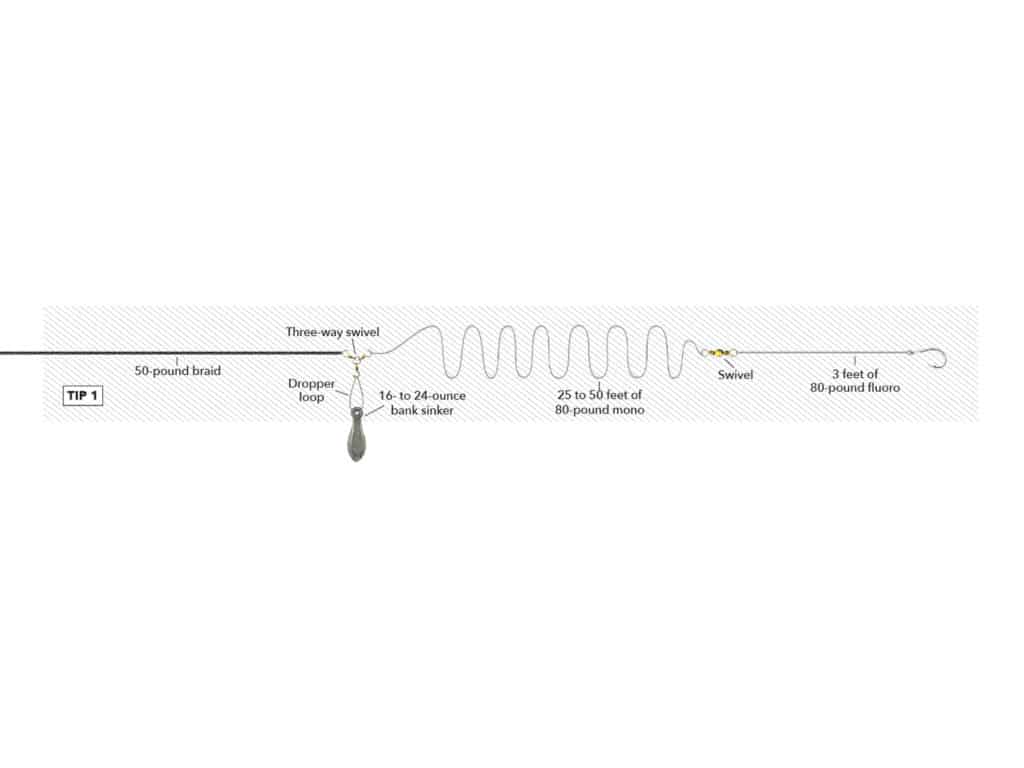
Over his lifetime of fishing wrecks and structure, Capt. Bouncer Smith has learned the benefits of using long leaders on his bottom rigs for snapper and grouper when fishing pressured waters in South Florida. A Penn International 50VSX filled with 50- to 80-pound braid is his standby. To the braid he attaches a three-way swivel. From there, he ties on a 25- to 50-foot (or longer) 50- to 80-pound monofilament or fluorocarbon leader, and to the end of that, a smaller barrel swivel with 3 to 5 feet of 80-pound fluorocarbon to a circle hook. The third eye of the swivel connects to a 30- to 40-pound monofilament dropper loop with an appropriate-size bank sinker. The loop allows him to change out sinker weights based on current speed and depth. When dropped to the bottom and retrieved with three to five cranks on the reel, the long leader provides separation from the conspicuous weight and three-way swivel, allowing the live or cut bait the freedom to move around naturally.
Tip 2: Use An Anchor Ball to Retrieve Your Anchor
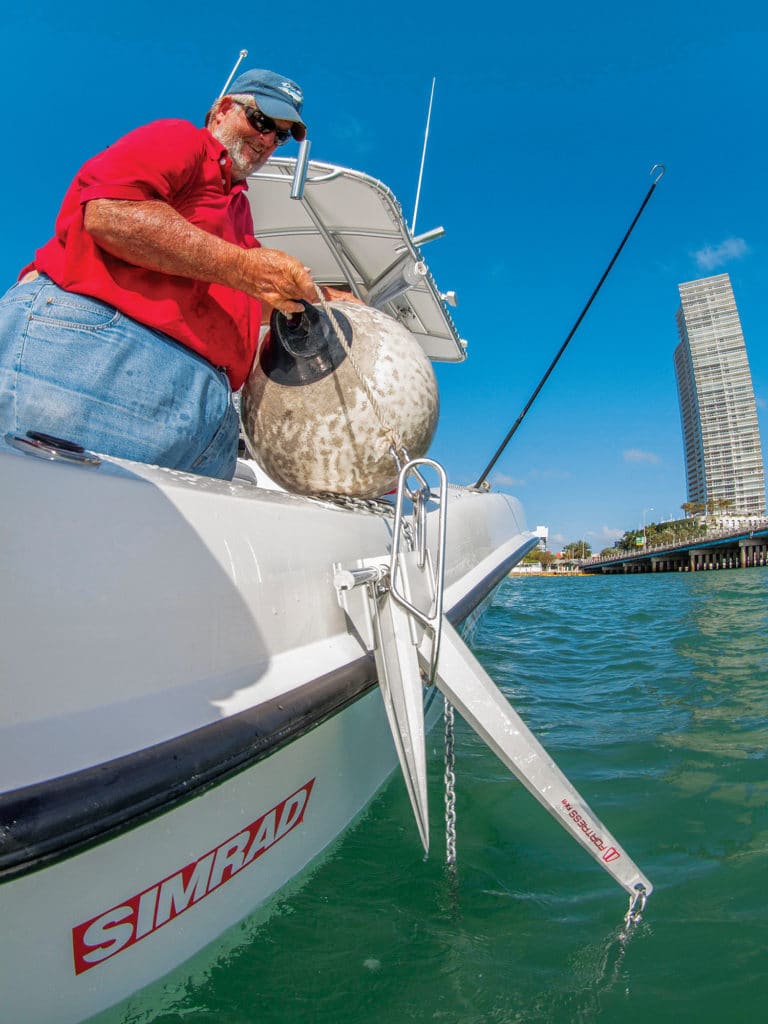
While an electric windlass is advantageous, Smith finds the pulling ring and anchor ball the most dependable for anchor retrieval. The forward momentum of the boat in gear, with the buoyancy of the anchor ball, helps pull the anchor off the bottom. A Griffin Clip pulling ring, modified with a unique elongated shape, safely and effectively guides the anchor rope in a more vertical ascent, and minimizes possible damage caused when retrieving the anchor too quickly. Smith uses a gaff in the rod holder amidships to prevent the anchor rope from sling-shotting over the gunwale.
Tip 3: How Much Anchor Line to Let Out When You Anchor
“You can never have too much rope when anchoring,” says Smith. “If you have 300 feet of rope and current is strong, you can never anchor in 100 feet of water.” Typically, he uses seven times the depth to guarantee solid anchor sets in strong current, or when more play is needed to drop back or pull forward over parts of a wreck or good bottom. He also uses 25 feet of stainless ¼-inch chain between the anchor and 800 feet of rope. He segments the anchor rope into four 200-foot sections connected by commercial-grade stainless carabiners and stainless thimbles and shackles. Hooking a long-running fish makes rapidly retrieving the anchor impossible. Simply disconnect the carabiner, attach your anchor ball to the anchored rope and thimble, and throw it overboard. This allows you to come back and reset on the same bottom once you’ve caught the fish.
Destin, Florida: Capt. Pat Dineen
Tip 4: Use a Trolling Motor to Stay in One Place Instead of an Anchor
Capt. Pat Dineen has a different approach to wreck fishing than most captains. He operates a 24-foot Skeeter bay boat with a Minn-Kota Riptide SP 36-volt I-Pilot, a 112-pound-thrust trolling motor. With a GPS receiver built in, the I-Pilot keeps you on a fishing spot like an electronic anchor. Just choose your spot, and if you drift more than 5 feet away, I-Pilot will trigger your trolling motor to take you back automatically.
“Traditional anchoring can be a commitment,” he says. “With the I-Pilot, I can cover a lot of ground and don’t have to worry about setting, retrieving and resetting the anchor.” Stealth is another benefit. “I can move in over a wreck or rock pile like a ninja,” says Dineen. “The silence of the trolling motor and not having to drop a loud anchor and chain overboard have improved my fishing tenfold.” Additionally, the trolling motor allows fast repositioning of the boat for finding different sections of a bottom structure.
Tip 5: Don’t Fish the Bottom for Red Snapper
Over the years, Dineen has changed his approach from fishing strictly weighted bottom rigs to now using no weight if the conditions allow. He believes a naturally presented live or cut bait sent back through a chum line has produced his largest red snapper in water less than 100 feet. “Contrary to what many anglers believe, those bigger red snappers are higher up in the water column, and adding weight takes you out of the strike zone,” he says. Additionally, the less-weight approach can be fished on lighter, more sporting tackle.
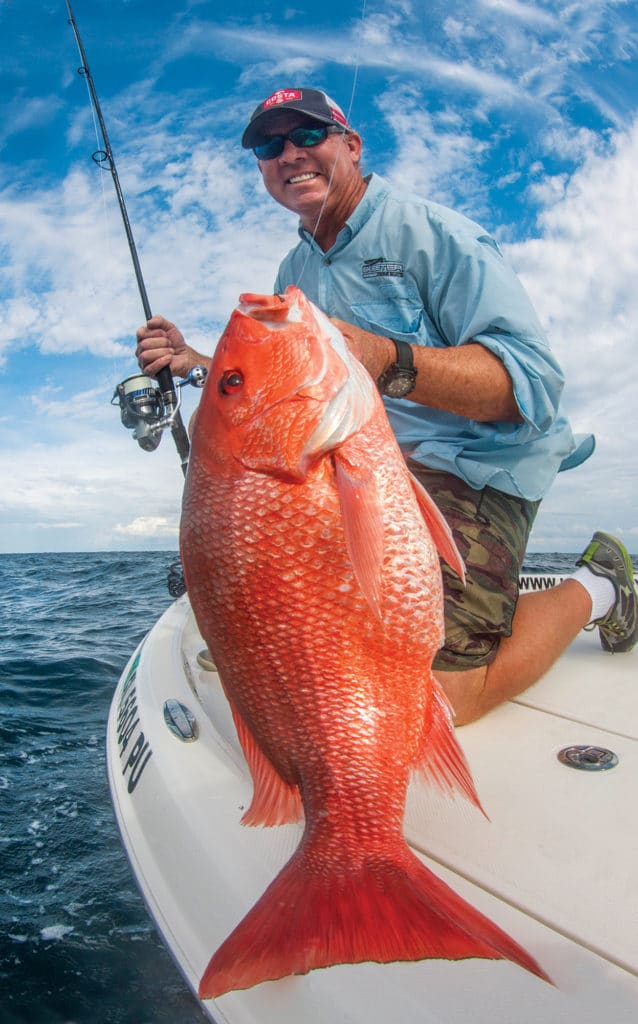
Long Island Sound, New York: Capt. John Marino
Tip 6: Jig for Bottom Fish on the Edge of Structure
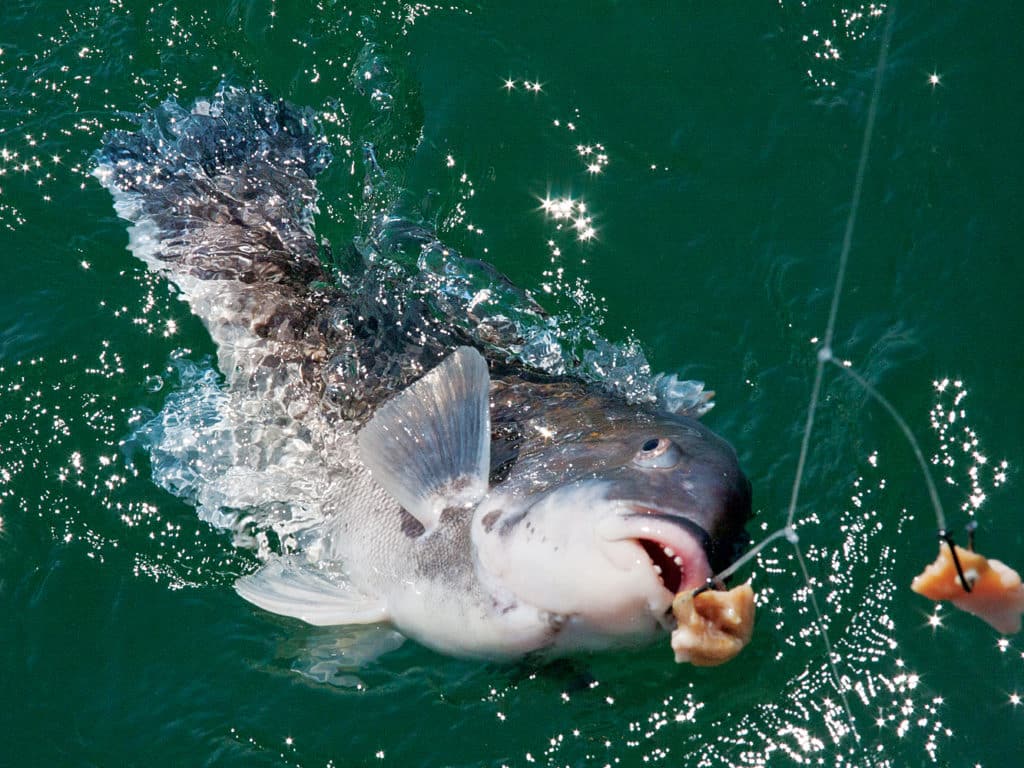
Traditional tautog fishing in Eastern Long Island Sound is done with a single or double Virginia-style blackfish chicken bottom fishing rig, but Capt. John Marino has helped develop the light-tackle jig craze for blackfish. “It’s taken the fun of blackfish fishing up a notch,” says Marino. He uses Tidaltails ½-ounce “craggy”-colored jigs with whole or split green and Asian crabs pinned through the leg sockets. Typically, he finds that the outlying edges of rock piles or broken-up edges of wrecks are the best areas to find bigger blackfish.
Tip 7: Use Two Anchors When Bottom Fishing
Marino employs a dual-anchor system to more effectively position his boat over or near good structure for blackfish and sea bass. When positioning with a single anchor off the bow, the boat’s position is at the mercy of the changing winds and tides, shimmying the vessel over and away from good structure. With dual anchors set wide apart from each other, he can tether or bridle the boat back-and-forth and side-to-side to better target an area of good bottom. He usually sets up about 30 to 90 feet up-current of the good bottom and uses a Manson Supreme scoop-style anchor, because they grab the type of bottom in Long Island Sound much better than a Danforth. Marino never uses a grapple anchor, which can destroy prime habitat around blackfish structure.
Key West, Florida: Capt. Billy Delph
Tip 8: Let Your Bottom Rigs Slowly to the Bottom
“It’s not a race to get down there,” says Capt. Billy Delph. “Drop your rigs slowly so you don’t get tangled, and position yourself for success on the boat. Spreading my anglers apart makes each drop count, because the more time spent untangling lines, the less time there is to catch fish.” On occasion, some of the best anglers on Delph’s boat are only as good as the one who drops a rig too fast, cluttering the bottom with a tangled, unnatural-looking rig that often shuts the bite off.
Tip 9: A Simple Bottom Fishing Rig Might Be the Best
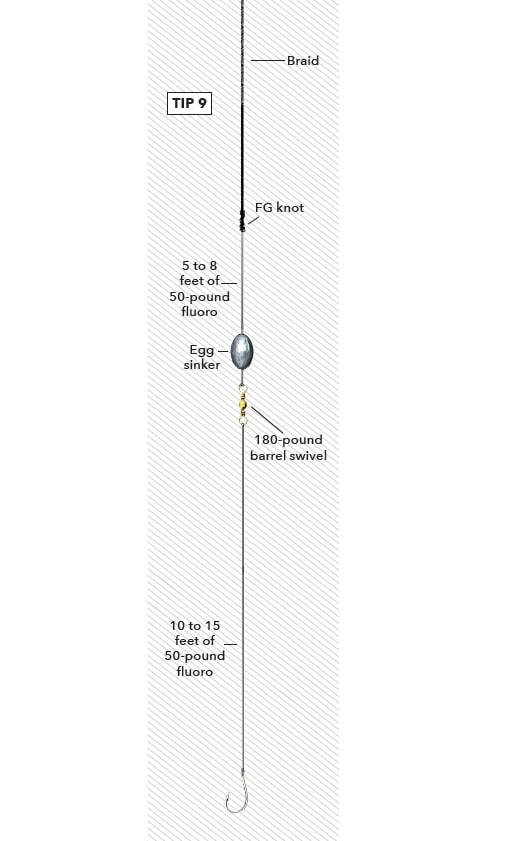
With the clear waters surrounding Key West, Delph believes it helps to reduce your footprint. His bottom fishing techniques have evolved into keeping rigs simple and not overdoing it with too many rods. He has streamlined his best bottom fishing rig using 50-pound braid connected to 5 to 8 feet of 50-pound fluorocarbon with an FG knot. He slides an appropriate egg weight onto the fluorocarbon, then ties on a 180-pound barrel swivel. To that, he connects 10 to 15 feet of 50-pound fluorocarbon and finally the hook. He pins the live bait in the lower jaw and up through the top jaw for bottom fishing.
This same strategy is applicable to pelagic fish. The Delph fishing team caught two of the biggest kingfish in the history of the Southern Kingfish Association tournament series while fishing only two rods at a time. “My brothers and I learned during kingfish tournaments off Key West that free-lining two live baits around wrecks or good reef is more effective and less conspicuous than fishing many lines.”
Tip 10: Don’t Overfish a Wreck
“Take care not to disturb the environment of a wreck,” says Delph. Many boat operators make the mistake of revving their engines or throwing a clunky anchor and chain overboard, disturbing the harmony of the environment. Many wrecks get fished every day, and the fish can sense if something is not right, often shutting the bite down. Unless there is extreme current, Delph prefers quietly holding the boat idling in reverse, into the current, or shutting the engines down entirely and “sweep-drifting” the area around the wreck. He approaches the wrecks up-current and starts fishing as far as 100 to 200 yards from the wreck, depending on the speed of the current. “Mutton snapper are always moving, as are grouper at times, so don’t be misled that the fish are only on or inside the wreck,” says Delph. The fish can be prowling yards away from wrecks. Make your drifts well outside the perimeter first; moving closer on your consecutive drifts is a good strategy. Take a few fish and move on to another wreck, leaving some for future trips, says Delph.
Marathon, Florida: Capt. David Schugar
Tip 11: A Bottom Fishing Rig that Doesn’t Tangle

Capt. David Schugar fishes a slightly different rig than most Florida Keys captains. He feels his bottom fishing rig reduces tangles on the drop. He uses 50-pound braided main line on his conventional outfits, connected to a 10-foot top shot of 60- or 80-pound fluorocarbon with a reinforced double uni-knot. He slides the top shot through a bead, then a small swivel and another bead, and then finishes with a 180-pound barrel swivel at the end. His bank sinker is attached to the smaller swivel, with the beads on each side, using a 4- to 6-inch surgeon’s loop of lighter 30-pound monofilament. The surgeon’s loop allows him to change the bank-sinker size easily. The first bead, closest to the main line, should not pass over the double uni-knot connection. The second bead prevents the barrel swivel from getting caught on the knot of the 180-pound barrel swivel. On the other end of the terminal barrel swivel, Schugar attaches another 15- to 25-foot section of 80- or 100-pound fluorocarbon leader with a 5/0 to 7/0 circle hook.
Long Beach, California: Capt. Allyn Watson
Tip 12: Use Sonar to Find Good Bottom Fishing Spots
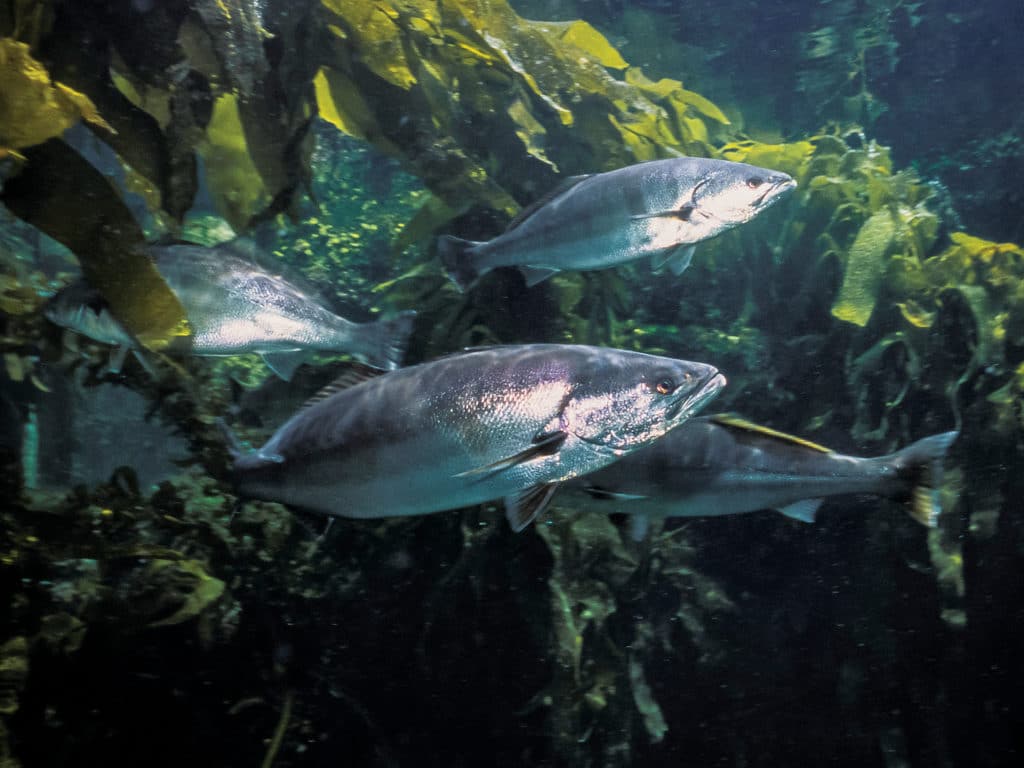
Capt. Allyn Watson is considered the white seabass king off Southern California’s Catalina Island. Watson has extensively fished around the island and has come to know specific locations that consistently produce fish. He doesn’t use a sonar unit to mark fish; instead he uses it to find good bottom topography. “That’s where white seabass like to concentrate. Every 50-mile section of the California coast in each direction, the techniques for catching white seabass change,” says Watson. “But one commonality is that white seabass associate with good bottom structure. The most critical part of white seabass fishing is the position of your boat at anchor. You need to be exactly in the right position up-current of the structure you’re fishing. Ten feet too far and you won’t catch as many fish,” he says.
Venice, Louisiana: Capt. Rimmer Covington
Tip 13: Stay Up-Current of Bottom Fishing Spots
Capt. Rimmer Covington believes one of the most basic but overlooked approaches to fishing structure in the Gulf is that you must concentrate your efforts on the up-current side of any bottom structure. When it comes to fishing the lumps, rigs and wrecks off the Mississippi Delta, whether anchored or drifting, he will always start up-current. Being acutely aware of where the current is hitting the structure drastically improves fishing productivity when setting up a drift or anchor.
Tip 14: Use a Light When Fishing Deeper Than 300 Feet
Use a light on your fishing rigs when fishing deeper than 300 feet. “Pipeline crossings or subsea oil-well heads deeper than 300 feet are excellent structure for attracting bottom species, and we’ve come to learn lights really improve the bites,” says Covington. “I’ll also use more hooks when fishing deeper than 300 feet. It’s a chore to get down there, so you might as well use two hooks (IGFA max) in case you lose a bait or one gets eaten on the drop.”
Tip 15: Zoom in on Your Sounder When Bottom Fishing
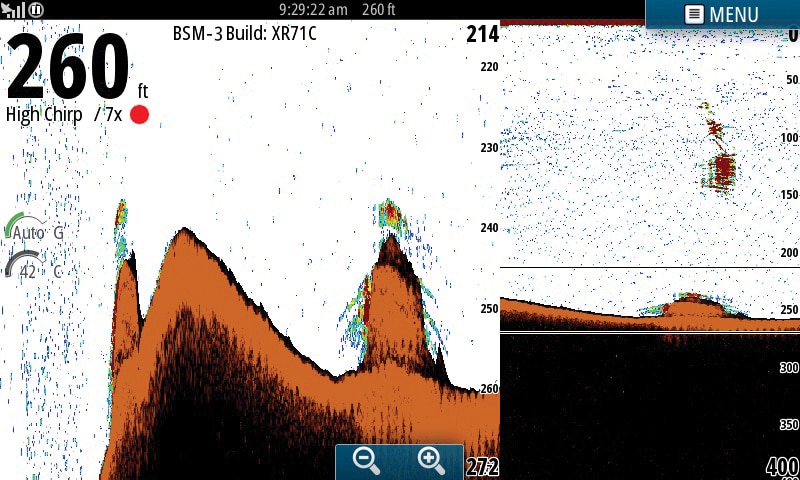
When it comes to bottom fishing in deep water, Covington and fellow Southern Way captain Bart Haddad believe the most important piece of equipment is a sonar unit. They use Simrad BSM-3 broadband CHIRP technology and intimately know the functions of the sounder. “One of the most important features of most units for fishing bottom structure is the zoom function, to identify smaller nooks and crannies on broad regions of good structure,” says Haddad. “For example, a wreck with a 40-foot-high span of relief may only hold structure-associated species such as grouper in smaller, broken-up pockets of 3 to 5 feet of relief.”
Brielle, New Jersey: Capt. Al Ristori
Tip 16: A Marker Buoy is Important Bottom Fishing Gear
When conditions are terrible for anchoring over a specific wreck or good bottom, and drift-fishing is the only option, Capt. Al Ristori will use a fisherman’s marker buoy. A fishing marker buoy deployed over or near the wreck is a good way to keep constant visual contact with the wreck’s location. When you have to make many drifts over a wreck or good bottom, having a visual reference ahead of you while keeping tabs on the winds and current will make it much easier to consistently hit the spot. The marker buoy is an important piece of bottom fishing gear.
Tip 17: Don’t Chum Too Much When Bottom Fishing
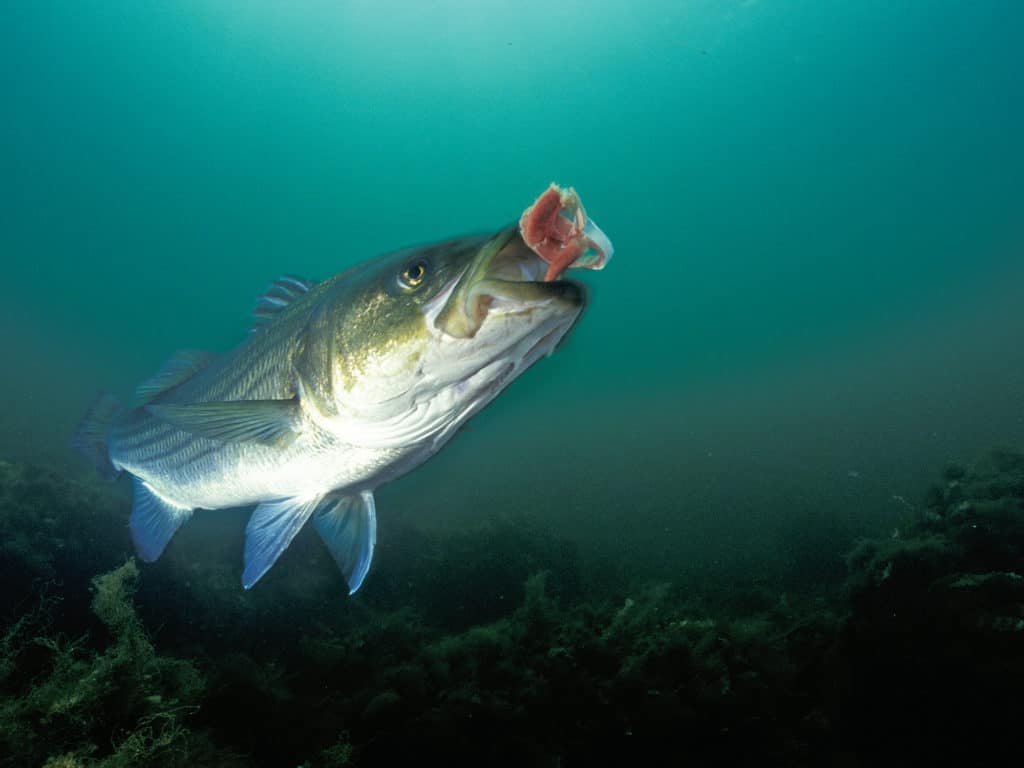
When chumming strictly for striped bass over good bottom structure, Ristori cuts his menhaden or clams into small pieces and controls the amount of chum he lets out with a few tosses at a time. For bluefish, he will finely grind the chum and keep a steady stream of it in a chum bag flowing off the stern at all times. Too much chumming will often bring in too many bluefish, quickly reducing the chances of getting baits to the stripers. If bluefish swarm the boat when he’s targeting stripers, he stops chumming altogether, and the blues usually move on.
Seward, Alaska: Capt. Andy Mezirow
Tip 18: Get Your Chum to the Bottom with a Chum Sack
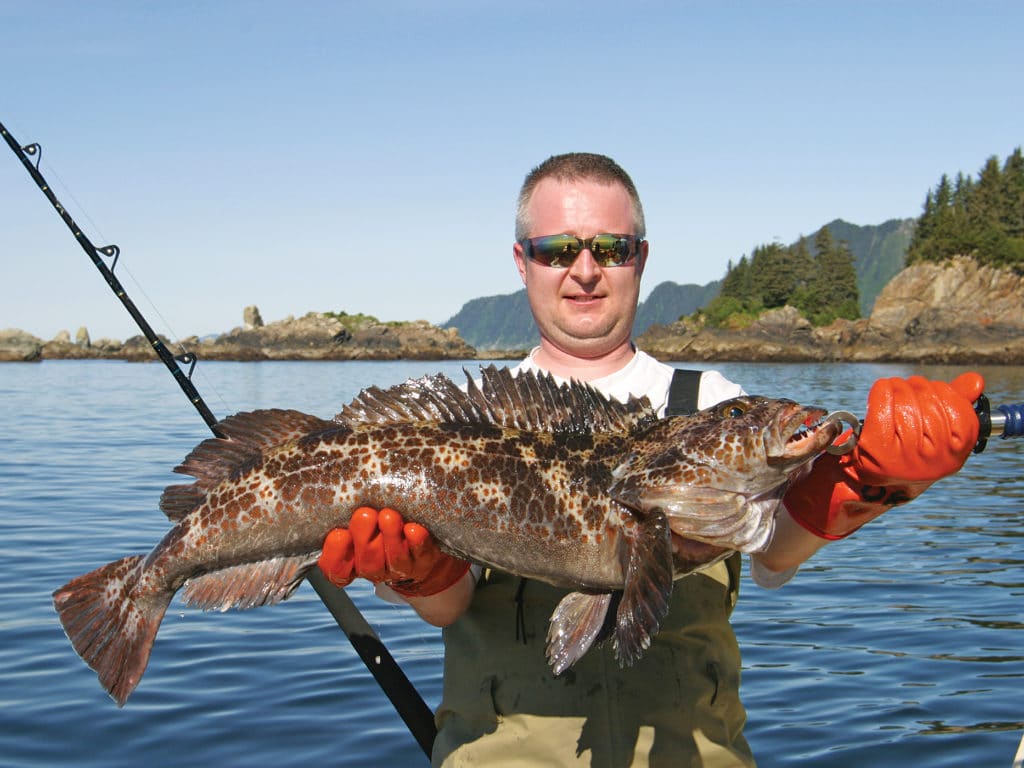
When anchored and fishing for lingcod and rockfish, Capt. Andy Mezirow uses a mixture of ground chum and fresh chunks of cut bait rolled up in a sack, suspended with a rope off the back. The common practice by other captains in Alaska is to tie the chum-filled burlap sack directly on the anchor or anchor line as you let it down. “I noticed the current at the point of anchor is sometimes different from at the stern. Rather than risk wasting a good scent trail, I place my chum lump-sack directly in the vicinity of where my anglers drop their lures or baits,” says Mezirow.
Tip 19: Use a Sea Anchor When Bottom Fishing
When anchored over structure, Capt. Andy Mezirow often uses a small drogue or sea anchor to help mitigate the effect of wind against tide. He believes it helps pull the boat back into a stable position. He attaches the drogue to the stern quarter of his vessel.
Virginia Beach, Virginia: Capt. Steve Wray
Tip 20: How Not to Tangle Bottom Fishing Rigs
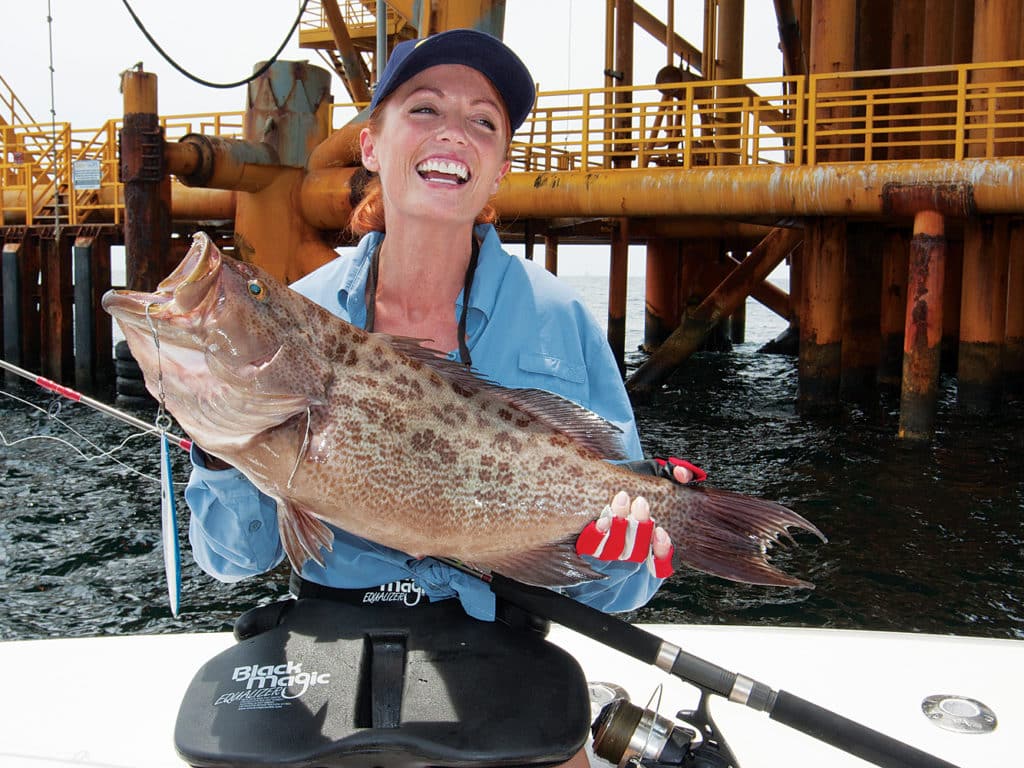
Capt. Steve Wray can bottom fish with up to 10 anglers at a time. To minimize tangles and keep anglers hooked up, he believes it’s best to fish all the same bottom fishing rigs. Use all the same tackle, especially in terms of sinker weight and braided main line. “The sensitivity and the way braid cuts through the water make it the best for bottom fishing,” he says. “Monofilament is another animal. If one angler on the boat is using monofilament, while all the others are using braid, it normally leads to a mess of lines.” The same goes for a group of anglers who want to high-speed jig the wrecks, says Wray. It’s best not to mix up conventional bait anglers with jigging anglers.
Tip 21: Investigate the Wreck before Bottom Fishing
When Capt. Wray pulls up over good structure off Virginia Beach, he always uses his sonar to investigate what’s going on down there. “Go over the wreck first and watch your sonar. You will find that black sea bass congregate on one side of the wreck and may not be on the other,” he says. The morning and late afternoon usually produce the best numbers of sea bass. By midday, black sea bass tend to scatter away from the wreck, returning only in the late afternoon.
Tip 22: Protect Your Bottom Fishing Spots Closely
Wrecks and bottom structure that consistently hold fish are gold in any captain’s book. Wray protects his spots as best he can by either not fishing them when too many boats are around, or by moving away when other boats get too close. “Some try and mark my spots,” he says. “I don’t like to be like that, but I’ve learned the hard way,” he complains. “Boats move in on a good wreck I’m fishing and then post their catches on Facebook that night. The next day it’s a party on the wreck.”








